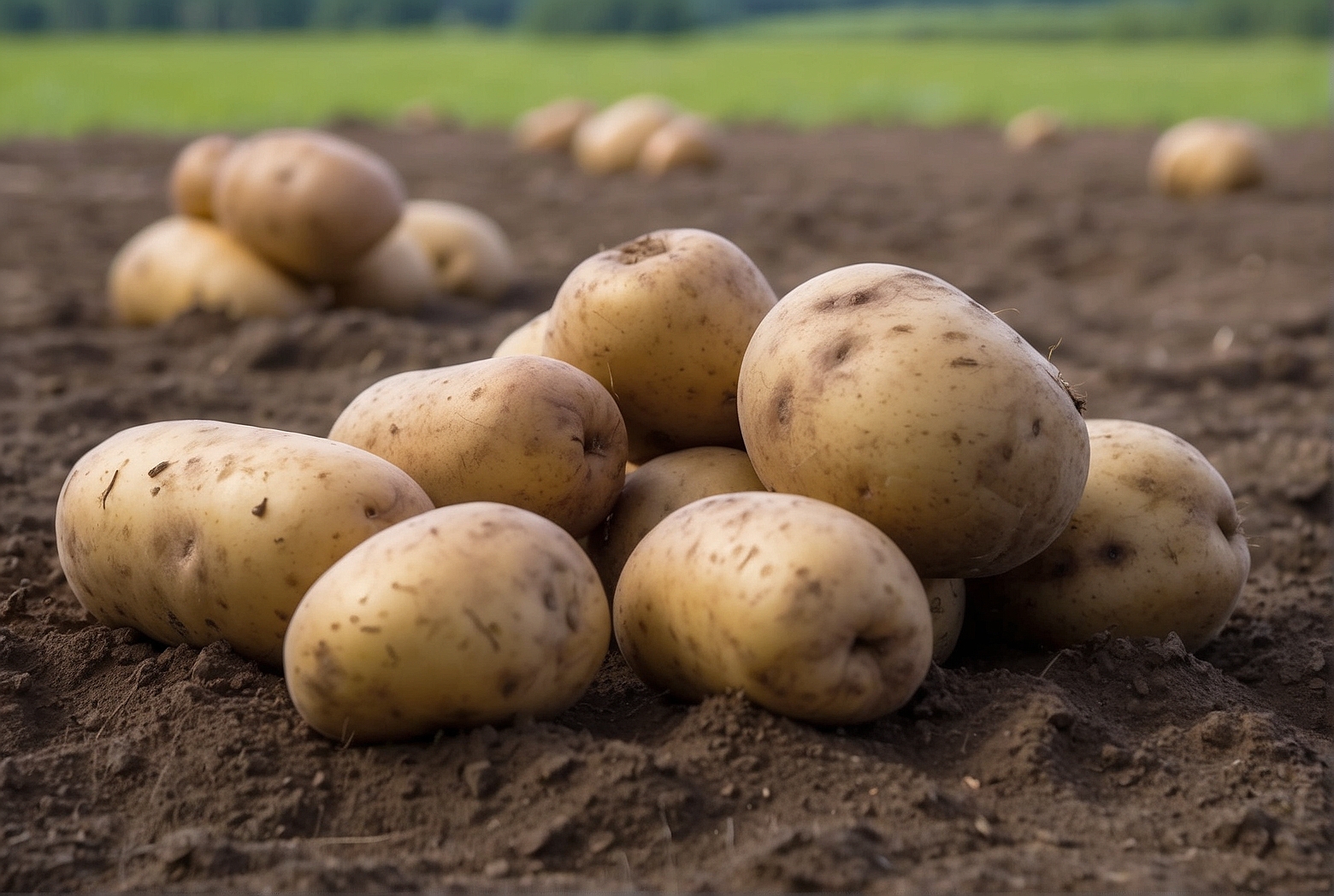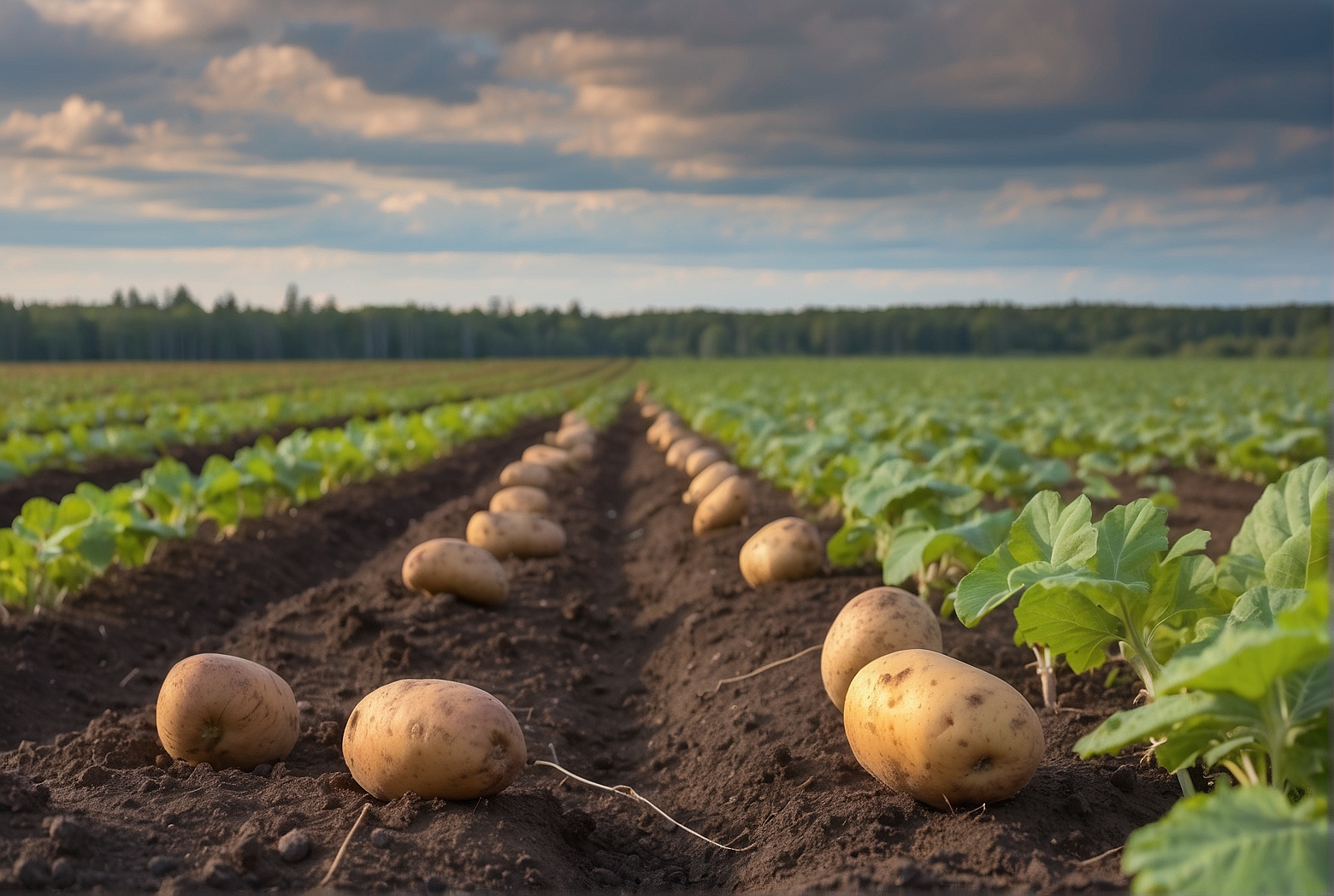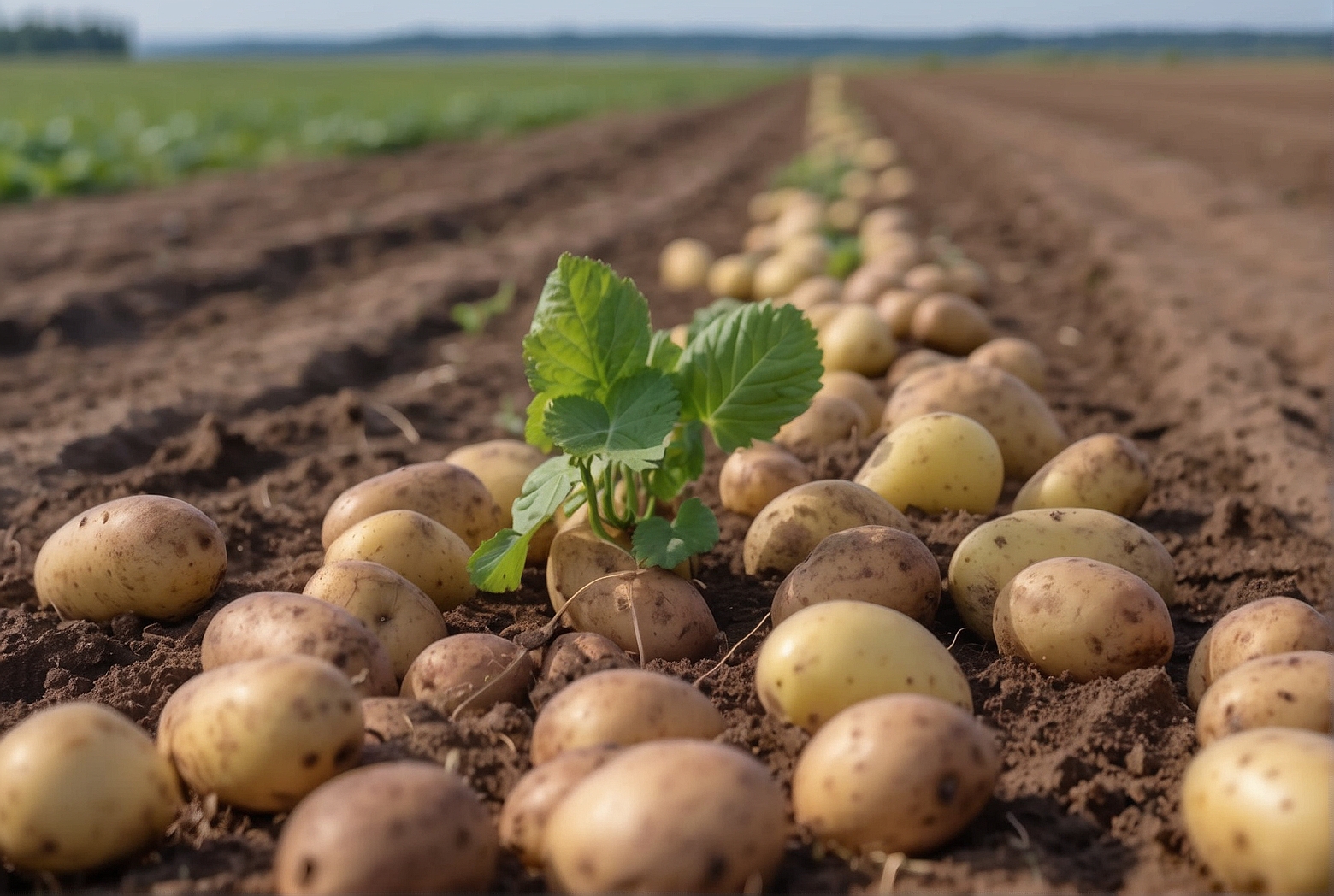Last Updated on March 29, 2024 by Tony Manhart
Did you know that the classification of Kennebec potatoes as determinate or indeterminate can have a significant impact on their growth and cultivation? Understanding this distinction is crucial for potato farmers and backyard gardeners alike. In this article, we will explore the nature of Kennebec potatoes, examining their growth patterns and shedding light on whether they fall into the determinate or indeterminate category. By the end, you will have a deeper understanding of these popular potatoes and be better equipped to maximize their potential in your own garden or farm.
Definition of determinate and indeterminate potatoes
Determinate and indeterminate are terms used to describe the growth habit of certain potato varieties. These terms refer to the way in which the potato plants develop and produce tubers. Understanding the difference between determinate and indeterminate potatoes is essential for successful potato cultivation. Let’s take a closer look at these terms and how they apply to Kennebec potatoes.
Determinateness in potatoes
Determinate potatoes are characterized by a more compact growth habit and a fixed period of development. These potatoes have a determinate vine, meaning that the stems stop elongating after a certain point, and the plant reaches a predetermined size. Determinate potatoes tend to produce a single, concentrated harvest of tubers, making them suitable for growers who prefer a more synchronized harvesting experience.
Indeterminateness in potatoes
On the other hand, indeterminate potatoes exhibit a more sprawling growth habit and continuous vine development throughout the growing season. The indeterminate vines continue to grow and produce new leaves and stems, resulting in a more extensive and longer plant. Indeterminate potatoes typically yield multiple harvests over an extended period, allowing for a prolonged harvest season.

Characteristics of Kennebec Potatoes
Appearance
Kennebec potatoes are known for their attractive appearance. They feature smooth, thin, and light-brown skin that encases creamy white flesh. The oval to oblong shape of Kennebec potatoes adds to their visual appeal, making them a favorite choice for both commercial and home growers.
Texture
One notable characteristic of Kennebec potatoes is their exceptional texture. When cooked, these potatoes have a fluffy, dense, and creamy texture that holds its shape well. This desirable texture makes Kennebec potatoes versatile in various cooking methods, including boiling, baking, frying, and mashing.
Flavor
Kennebec potatoes have a mild, slightly sweet flavor that is well-balanced. Their subtle taste allows them to complement a wide range of dishes without overpowering other ingredients. Whether used in soups, salads, or simply roasted, Kennebec potatoes delight the taste buds with their gentle flavor profile.
Yield
Kennebec potatoes exhibit a moderate to high yield potential. With proper care and cultivation practices, these potatoes can provide a substantial harvest. The yield may vary depending on factors such as soil fertility, watering, and disease prevention. However, when compared to some other potato varieties, Kennebec potatoes consistently deliver satisfactory yields.

Growth Habit of Kennebec Potatoes
Determinacy in Kennebec Potatoes
The determinacy of Kennebec potatoes has been a topic of discussion among researchers and growers. While Kennebec potatoes generally exhibit characteristics of determinate growth, certain factors may influence their growth habit and yield potential. Understanding the determinacy of Kennebec potatoes is essential for growers to plan their cultivation practices effectively.
Indeterminacy in Kennebec Potatoes
Although determinate growth is commonly associated with Kennebec potatoes, there have been cases where these potatoes displayed indeterminate characteristics. indeterminate growth in Kennebec potatoes can lead to prolonged vine development and multiple harvests. The occurrence of indeterminacy in Kennebec potatoes may be influenced by various factors, including genetics and environmental conditions.
Factors Affecting Determinacy or Indeterminacy
Genetics
Genetics play a crucial role in determining the growth habit of potatoes, including Kennebec potatoes. The genetic makeup of a potato variety influences whether it will exhibit a determinate or indeterminate growth pattern. Breeders and researchers continuously work to develop new potato varieties with desired growth habits, either determinate or indeterminate, based on specific market demands and grower preferences.
Environmental Factors
In addition to genetics, environmental conditions also influence the growth habit of Kennebec potatoes. Factors such as temperature, day length, and nutrient availability can impact the development of potato plants and tuber formation. While Kennebec potatoes are generally considered determinate, certain environmental conditions may stimulate indeterminate growth, leading to extended vine development and multiple harvests.
Advantages of Determinate Potatoes
Uniform Harvesting
One of the significant advantages of determinate potatoes, like some varieties of Kennebec, is their synchronized and uniform harvesting. Since determinate potatoes usually produce tubers in a concentrated period, growers can efficiently harvest their entire crop at once. This synchronized harvesting simplifies logistics, reduces labor requirements, and ensures uniformity in tuber maturity, facilitating easier storage and distribution.
Better Storage Potential
Determinate potatoes often exhibit better storage potential than their indeterminate counterparts. The synchronized tuber development allows for a more predictable aging process, resulting in more consistent quality throughout the harvested crop. Determinate potatoes tend to have a lower risk of sprouting and higher resistance to storage diseases, making them suitable for long-term storage when properly handled.
Advantages of Indeterminate Potatoes
Continuous Harvesting
Indeterminate potatoes, if Kennebec displays indeterminacy, offer the advantage of continuous harvesting. As the vines of indeterminate potatoes continue to grow and produce new tubers, growers can harvest the mature tubers while leaving younger ones to develop further. This allows for a more extended harvest season, providing a continuous supply of fresh potatoes and enabling growers to meet market demand more effectively.
Higher Total Yield
Another significant advantage of indeterminate potatoes is their potential for a higher total yield compared to determinate varieties. Since indeterminate potatoes produce tubers continuously, they have the opportunity to yield multiple harvests throughout the growing season. This extended tuber production allows for greater overall yield, making indeterminate potatoes an attractive choice for commercial growers aiming to maximize their crop output.
Kennebec Potatoes: Determinate or Indeterminate?
Research on the determinacy or indeterminacy of Kennebec potatoes has produced mixed findings. While Kennebec potatoes are generally considered to have a determinate growth habit, there have been instances where they displayed indeterminate characteristics. The variability in growth habit can be attributed to factors such as genetics and environmental conditions, as mentioned earlier.
Considerations for Growers
For growers, these mixed findings regarding the determinacy or indeterminacy of Kennebec potatoes highlight the importance of observing their individual crop and considering various factors. Evaluating the growth habit of Kennebec potatoes in a specific growing environment can help growers make informed decisions regarding planting density, harvest timing, and other cultivation practices. Monitoring the growth patterns of the potato plants and assessing market demand can aid growers in optimizing their yields and meeting consumer needs.
Optimal Cultivation Practices
Planting Guidelines
When cultivating Kennebec potatoes, it is essential to follow planting guidelines to ensure optimal growth and yield. Start by selecting healthy seed potatoes that are free from diseases. The seed potatoes should be cut into pieces, each containing at least one or two eyes, before planting. Plant the seed pieces in well-draining soil, ensuring they are placed at the proper depth and spacing as recommended for the variety. Adequate soil fertility, regular watering, and pest management practices contribute to the successful cultivation of Kennebec potatoes.
Support Systems
While Kennebec potatoes typically have a determinate growth habit, providing support systems can be beneficial, especially in cases where indeterminacy is observed. Staking or trellising the potato plants helps keep the vines off the ground, reducing the risk of fungal diseases and facilitating better air circulation. Support systems also aid in tidiness, make it easier to monitor plant health, and simplify the harvest process by keeping the foliage and tubers elevated and more accessible.
Harvesting and Storage
Indications for Harvesting
Knowing when to harvest Kennebec potatoes is crucial for achieving optimal tuber quality and storage potential. Harvesting should be done when the plants have reached maturity, typically indicated by the yellowing and senescence of the foliage. The skin of the potatoes should be firm, and the tubers should have reached their desired size. Carefully dig up the tubers to avoid damage, and allow them to dry on the surface for a few hours before storing or further processing.
Proper Storage Techniques
For both determinate and potential indeterminate Kennebec potatoes, proper storage techniques are vital to maintain their freshness and quality. Store the harvested tubers in a cool, dark, and well-ventilated area that maintains a temperature around 45 to 50 degrees Fahrenheit (7 to 10 degrees Celsius). Keep the potatoes away from light, as exposure can lead to greening and the development of solanine, a natural toxin. Storing the potatoes in breathable containers, such as burlap sacks or wire baskets, helps regulate moisture and prolongs their shelf life.
Conclusion
In conclusion, while the determinacy or indeterminacy of Kennebec potatoes may vary depending on genetics and environmental factors, the variety is generally considered to have a determinate growth habit. However, it is crucial for growers to monitor their individual crop and consider factors such as market demand and cultivation practices to optimize their yields. Whether determinate or potentially indeterminate, Kennebec potatoes offer desirable characteristics such as attractive appearance, excellent texture, and versatile culinary uses. By following proper cultivation, harvesting, and storage techniques, growers can ensure a bountiful harvest and enjoy the culinary delights of Kennebec potatoes throughout the year.
Tony Manhart is a passionate gardener who has been tending to gardens for over 20 years. He takes pride in creating beautiful outdoor spaces with plants, trees, and shrubs that can thrive in any environment. He loves to share his knowledge with others and has taught classes on gardening basics and advanced techniques. He is committed to sustainability, using natural and organic methods to create and maintain gardens. He also works with local organizations to create green spaces for communities. When he’s not gardening, Tony enjoys hiking, reading, and spending time with his family.


